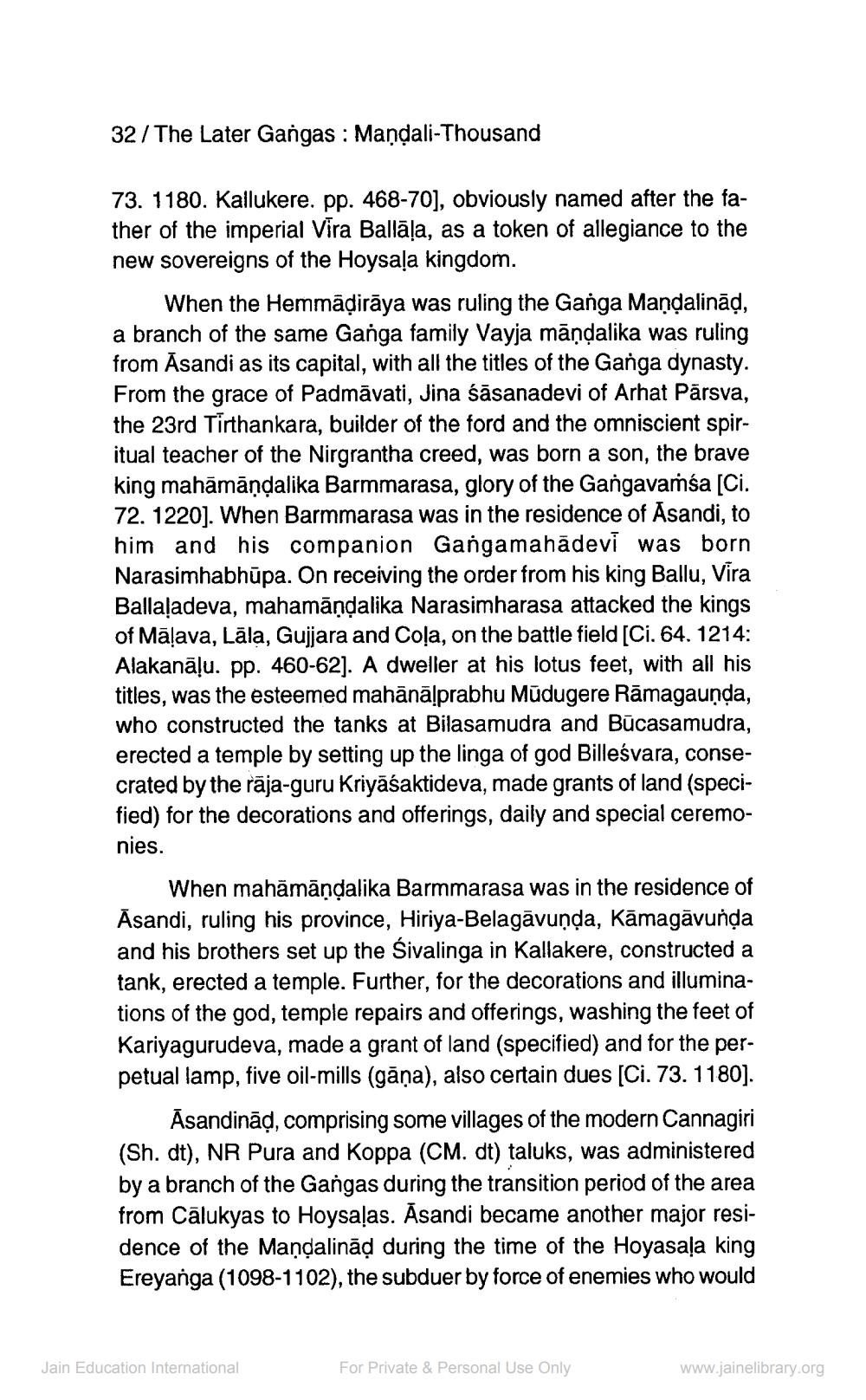________________
32 / The Later Gangas : Mandali-Thousand
73. 1180. Kallukere. pp. 468-70), obviously named after the father of the imperial Vira Ballāļa, as a token of allegiance to the new sovereigns of the Hoysaļa kingdom.
When the Hemmāçirāya was ruling the Ganga Mandalināờ, a branch of the same Ganga family Vayja māņdalika was ruling from Āsandi as its capital, with all the titles of the Ganga dynasty. From the grace of Padmāvati, Jina śāsanadevi of Arhat Pārsva, the 23rd Tirthankara, builder of the ford and the omniscient spiritual teacher of the Nirgrantha creed, was born a son, the brave king mahāmāņdalika Barmmarasa, glory of the Gangavamsa (Ci. 72. 1220]. When Barmmarasa was in the residence of Asandi, to him and his companion Gangamahādevi was born Narasimhabhūpa. On receiving the order from his king Ballu, Vira Balla!adeva, mahamāndalika Narasimharasa attacked the kings of Māļava, Lāla, Gujjara and Coļa, on the battle field (Ci. 64. 1214: Alakanālu. pp. 460-62). A dweller at his lotus feet, with all his titles, was the esteemed mahānālprabhu Mūdugere Rāmagauņda, who constructed the tanks at Bilasamudra and Būcasamudra, erected a temple by setting up the linga of god Billeśvara, consecrated by the rāja-guru Kriyāśaktideva, made grants of land (specified) for the decorations and offerings, daily and special ceremonies.
When mahāmāņdalika Barmmarasa was in the residence of Āsandi, ruling his province, Hiriya-Belagāvunda, Kāmagāvunda and his brothers set up the Sivalinga in Kallakere, constructed a tank, erected a temple. Further, for the decorations and illuminations of the god, temple repairs and offerings, washing the feet of Kariyagurudeva, made a grant of land (specified) and for the perpetual lamp, five oil-mills (gāņa), also certain dues [Ci. 73. 1180).
Āsandināờ, comprising some villages of the modern Cannagiri (Sh. dt), NR Pura and Koppa (CM. dt) taluks, was administered by a branch of the Gangas during the transition period of the area from Cālukyas to Hoysaļas. Āsandi became another major residence of the Mandalināļ during the time of the Hoyasaļa king Ereyanga (1098-1102), the subduer by force of enemies who would
Jain Education International
For Private & Personal Use Only
www.jainelibrary.org




